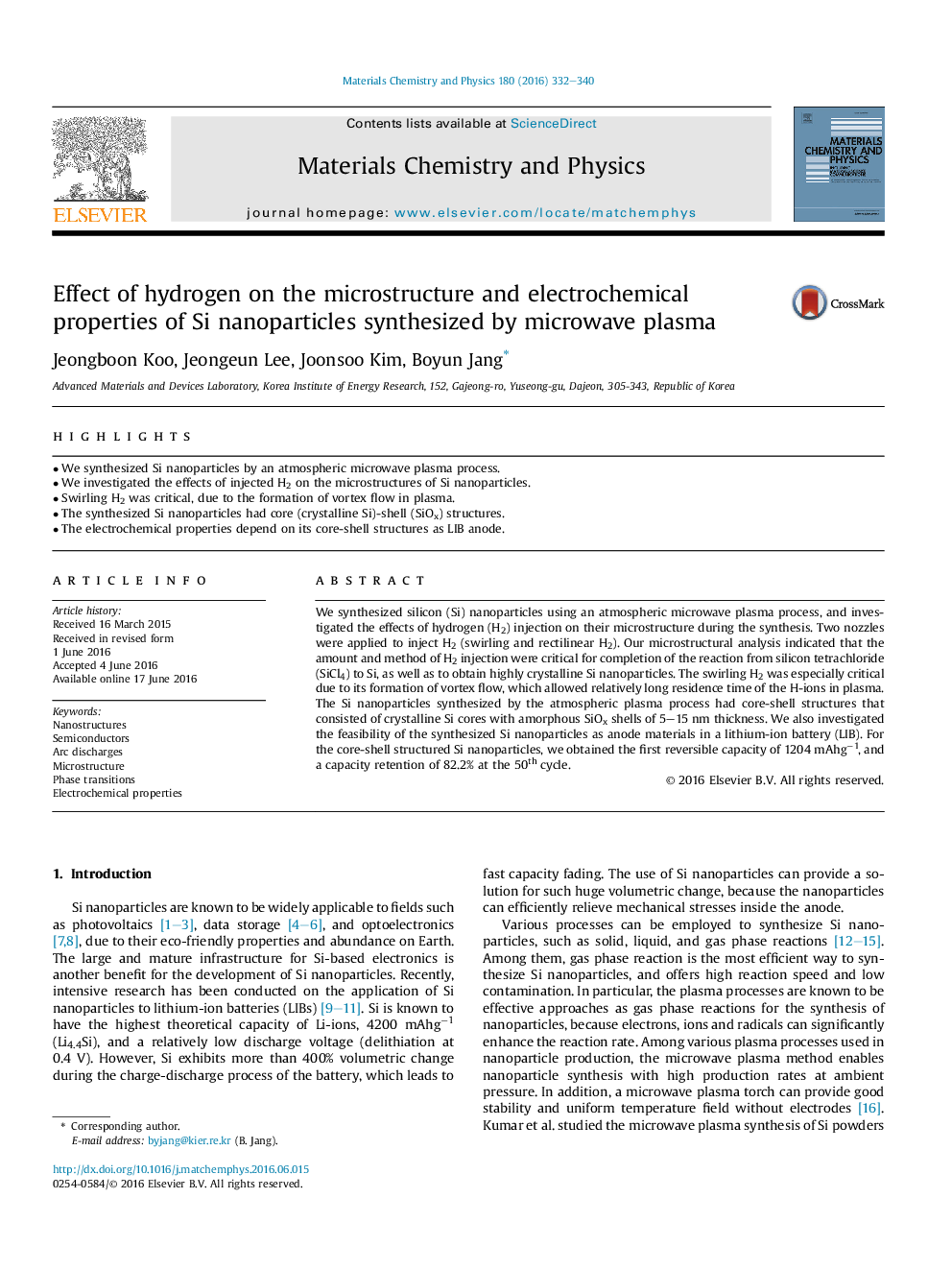| Article ID | Journal | Published Year | Pages | File Type |
|---|---|---|---|---|
| 1520544 | Materials Chemistry and Physics | 2016 | 9 Pages |
•We synthesized Si nanoparticles by an atmospheric microwave plasma process.•We investigated the effects of injected H2 on the microstructures of Si nanoparticles.•Swirling H2 was critical, due to the formation of vortex flow in plasma.•The synthesized Si nanoparticles had core (crystalline Si)-shell (SiOx) structures.•The electrochemical properties depend on its core-shell structures as LIB anode.
We synthesized silicon (Si) nanoparticles using an atmospheric microwave plasma process, and investigated the effects of hydrogen (H2) injection on their microstructure during the synthesis. Two nozzles were applied to inject H2 (swirling and rectilinear H2). Our microstructural analysis indicated that the amount and method of H2 injection were critical for completion of the reaction from silicon tetrachloride (SiCl4) to Si, as well as to obtain highly crystalline Si nanoparticles. The swirling H2 was especially critical due to its formation of vortex flow, which allowed relatively long residence time of the H-ions in plasma. The Si nanoparticles synthesized by the atmospheric plasma process had core-shell structures that consisted of crystalline Si cores with amorphous SiOx shells of 5–15 nm thickness. We also investigated the feasibility of the synthesized Si nanoparticles as anode materials in a lithium-ion battery (LIB). For the core-shell structured Si nanoparticles, we obtained the first reversible capacity of 1204 mAhg−1, and a capacity retention of 82.2% at the 50th cycle.
